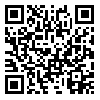Volume 4, Issue 3 (Journal of Science and Technology of Greenhouse Culture 2013)
2013, 4(3): 77-87 |
Back to browse issues page
1- , mhaghighi@cc.iut.ac.ir
Abstract: (11817 Views)
In order to investigate the effect of some substrates on uptake and concentration of nutrients in cherry tomato (Lycopersicon esculentum Mill. cv. Cerasiforne), this non-recycling soilless culture experiment was carried out as a completely randomized blocks design with 9 treatments and four replicates, with two plants in each pot. Treatments included perlite-vermiculite 50:50 %v, perlit-zeolite 50:50 %, perlite 100%, rice husk 100%, rice husk-vermiculite 50:50 %, rice husk-zeolite 50:50 %, perlite-rice husk-vermiculite 37.5: 37.5: 25 %, perlite-rice husk-zeolite 37.5: 37.5: 25 %, and cocopeat 100%. Results of the analysis of nutrients in the substrates showed that cocopeat and zeolite had the greatest concentration of potassium (K). The highest concentration of calcium (Ca) was found in zeolite medium, magnesium (Mg) in cocopeat, manganese (Mn) in rice husk, copper (Cu) in vermiculite, zinc (Zn) in cocopeat and iron (Fe) in vermiculite. The highest concentration of K and Mg in shoots of tomato plants was found in cocopeat, while plants in the vermiculite medium had the highest Ca concentration in their shoots. No significant relationship was found between concentrations of measured nutrients, except for K, in the substrates and their uptake by plants. In general, the highest nutrients uptake by cherry tomato plants was found in the medium containing a mixture of perlite and vermiculite, which is probably due to optimum root growth conditions, particularly high porosity and high ability for retention of water and nutrients.
Type of Study: Research |
Received: 2013/08/21 | Accepted: 2013/09/24 | Published: 2013/09/24
Received: 2013/08/21 | Accepted: 2013/09/24 | Published: 2013/09/24
Send email to the article author
| Rights and permissions | |
 |
This work is licensed under a Creative Commons Attribution-NonCommercial 4.0 International License. |








